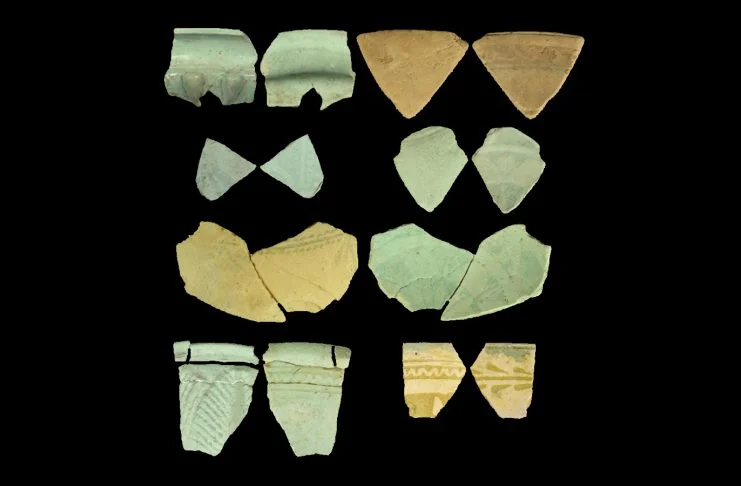
New research reveals what Ancient Egyptian faience has to do with gold
Researchers from the University of Warsaw, and the Cardinal Stefan Wyszynski University, have found that powdered quartz for the production of faience vessels from the ancient city of Athribis in the Nile Delta in Egypt, came from tailing heaps that remained after gold mining.
Tell Atrib (Athribis), was an ancient city in Lower Egypt, just northeast of Benha on the hill of Kom Sidi Yusuf. The city was once the capital of the tenth Lower Egyptian nome, with Egyptian occupation of the site dating back to the Old Kingdom
During excavations by a Polish-Egyptian archaeological mission between 1985-95, archaeologists found the remains of craft workshops and kilns. At the time, it was not clear what the kilns were used for, but researchers assumed that faience vessels found in the vicinity were fired in them.
A new research project funded by the National Science Centre on faience products from Tell Atrib, led by engineering geologist Małgorzata Zaremba from the Institute of Archaeology of the Cardinal Stefan Wyszyński University in Warsaw, has confirmed that some of the kilns could actually be used to fire faience vessels at a temperature of 1050-1150 degrees C.
The researchers analysed the chemical composition of seven fragments of 2,000 years old bowls that were covered with a glaze giving them a blue colour and shine. They are decorated with convex and concave motifs typical of Egyptian, Greek and Oriental cultures: from geometric patterns and floral patterns (lotus flowers, leaves, etc.) to figural scenes.
The composition consisted of approx. 90 percent powdered quartz, approx. 4 percent burnt lime and bone meal mixture, approx. 2 percent river fluvisol, 2 percent gelatine, 1 percent feldspar flour and 1 percent lead sulphide. Each of these ingredients had an important function during the firing process, for example, gelatine gave the mixture its plasticity
"All the ingredients for the production of the vessels came from Egypt, but that included its more distant regions. All the samples of faience bowls from Tell Atrib we analysed had been made of high-quality quartz powder from gold-bearing veins in the Eastern Desert in Egypt," says Zaremba.
The quartz for the production of faience came from heaps formed after gold mining, meaning that it was obtained from the mines in the Eastern Desert. These sites are located 500-600 km from Tell Atrib, between the Red Sea and the Nile Valley.
According to Zaremba, so far no one has attempted such a comprehensive analysis of faience items, especially their cores, hence the lack of data that could be compared.
"However, the research methodology we have developed and the obtained results may encourage other researchers to conduct further interdisciplinary research on faience objects, not only from the Ptolemaic Period," she adds.
Faience items were very popular throughout the long history of ancient Egypt. Blue and green figurines, pendants and amulets, e.g. in the shape of the key of life – ankh, were being made of faience in Egypt for several thousand years. To this day, scientists have not determined the exact recipe and production method. Souvenirs stylised as faience products are now sold at tourist stalls at famous monuments, such as the Giza pyramids or the Luxor Temple.
The oldest items made this way in Egypt come from the times of the builders of the first pyramids, over 4,500 years ago. The technology flourished in the middle of the second millennium BC and later, during the reign of Hatshepsut and Ramesses the Great.
Header Image Credit : Małgorzata Zaremba
-- Sent from my Linux system.
No comments:
Post a Comment